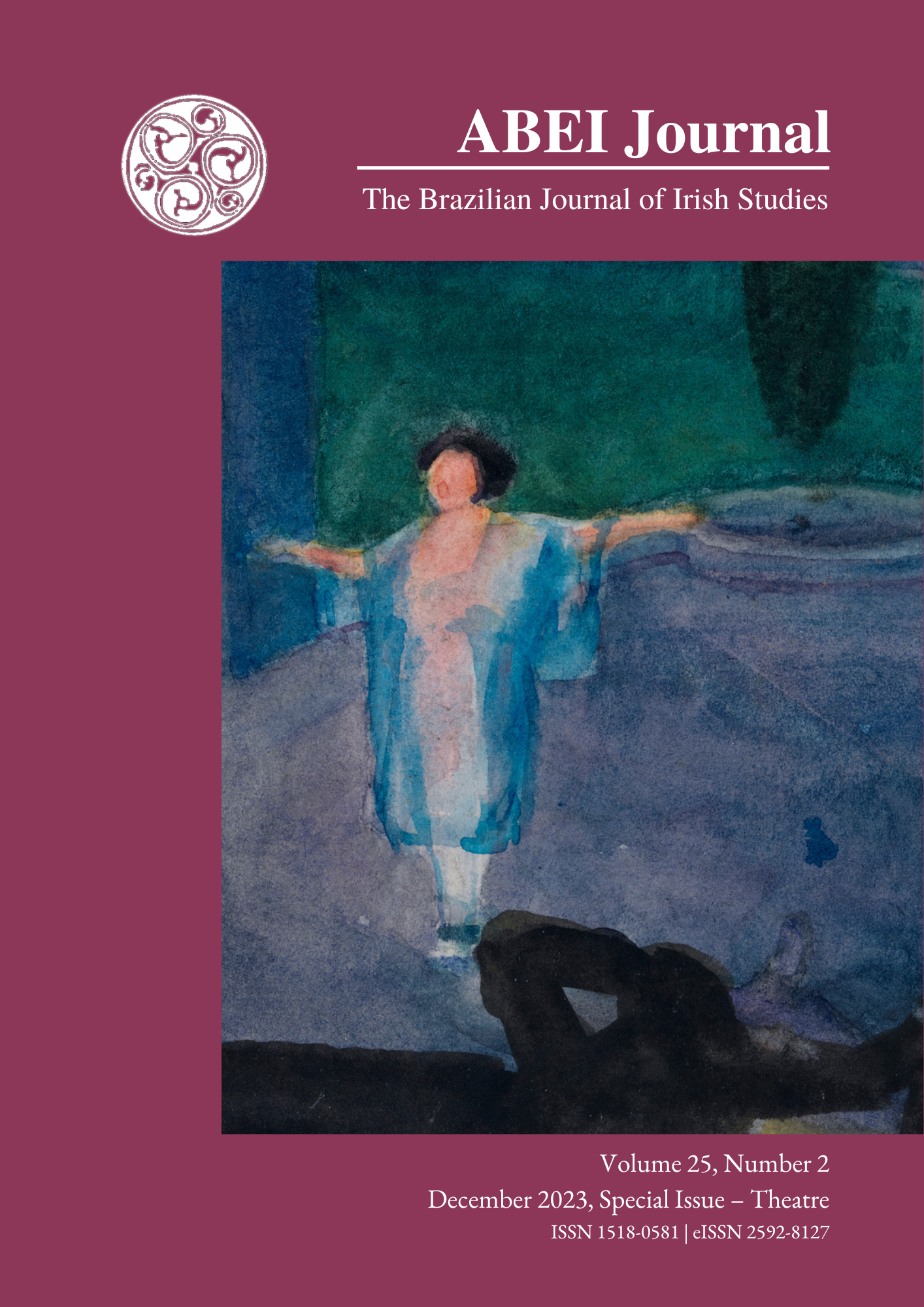Space, Place and Identity in Bernard Shaw’s The Tragedy of an Elderly Gentleman
DOI:
https://doi.org/10.11606/issn.2595-8127.v25i2p149-163Keywords:
Bernard Shaw, Absurdism, Space, Identity, Ireland, Back to Methuselah, The Tragedy of an Elderly GentlemanAbstract
The last of Bernard Shaw’s “Irish” plays, The Tragedy of an Elderly Gentleman (1921), raises the same concerns over colonialism, nationalism, and identity explored in John Bull’s Other Island (1904) and O’Flaherty V.C.: A Recruiting Pamphlet (1915) but does so from outside his preferred dramatic style, theatrical Realism. In this proto-Absurdist experiment, Shaw invents an Ireland in which differences of religion, class, and politics are moot; in 3000 A.D., age is the only category of social distinction. Experimenting with dramaturgical form and eschewing mimetic scenic design, Shaw utilizes Ireland’s mythic wildness and the transformational effect of its climate as an affective element of the play’s argument. Through Shaw’s treatment of space, this future Ireland with its inherently Irish inhabitants becomes the utopic home to a superior race that portends a life beyond the oppressive British/Irish and later intra-national binary partisan reality of post-WWI and pre-Free State Ireland.
References
Gahan, Peter. “John Bull’s Other War: Bernard Shaw and the Anglo-Irish War, 1918-1921,”
Shaw, vol. 28, Penn State University Press, 2008, pp. 209-38. https://doi.org/08.4824/shaw.28.1.0209.
Lefebvre, Henri, and Donald Nicholson-Smith. The Production of Space. Blackwell, 2009.
Moran, James. “Meditations in Time of Civil War: Back to Methuselah and Saint Joan in Production, 1919–1924.” Shaw, vol. 30, Penn State University Press, 2010, pp. 147–60, https://doi.org/10.5325/shaw.30.1.0147.
Morash, Christopher, and Shaun Richards. Mapping Irish Theatre: Theories of Space and Place. Cambridge University Press, 2013.
Mulhall, Ed. “‘Common Sense’ and the War: George Bernard Shaw in 1914.” Century Ireland, 2014, www.rte.ie/centuryireland/index.php/articles/common-sense-and-the-war-georgebernard-shaw-in-1914.
Roach, Joseph. “‘All the Dead Voices’: The Landscape of Famine in Waiting for Godot.” Land/Scape/Theatre, eds. Elinor Fuchs and Una Chaudhuri, University of Michigan Press, 2002, pp. 84–93.
Shaw, Bernard. “Common Sense About the War.” The New Statesman, 14 Nov. 1914. HathiTrust, babel.hathitrust.org/cgipt?id=mdp.39015011289694&view=1up&seq=3.
Shaw, Bernard. “How to Settle the Irish Question,” in The Matter with Ireland, eds. Dan H.Laurence and David H. Greene. Hill and Wang, 1962, pp. 140-163.
Shaw, Bernard. The Complete Works of Bernard Shaw. Odham’s Press Limited, 1934.
Shaw, Bernard. The Complete Prefaces, Volume 2:1914-1929. Ed. Dan H. Laurence and Daniel J. Leary. Penguin Press, 1995.
Tuan, Yi-Fu. Space and Place: The Perspective of Experience. University of Minnesota Press, 2018.
Downloads
Published
Issue
Section
License
Copyright (c) 2023 Justine Zapin

This work is licensed under a Creative Commons Attribution-NonCommercial 4.0 International License.


